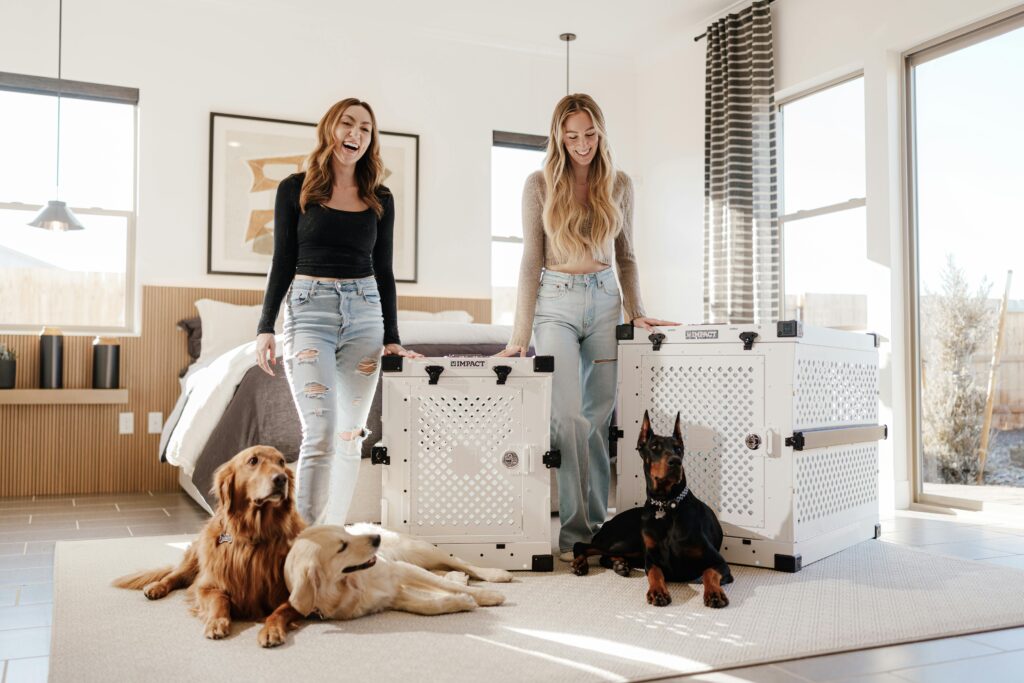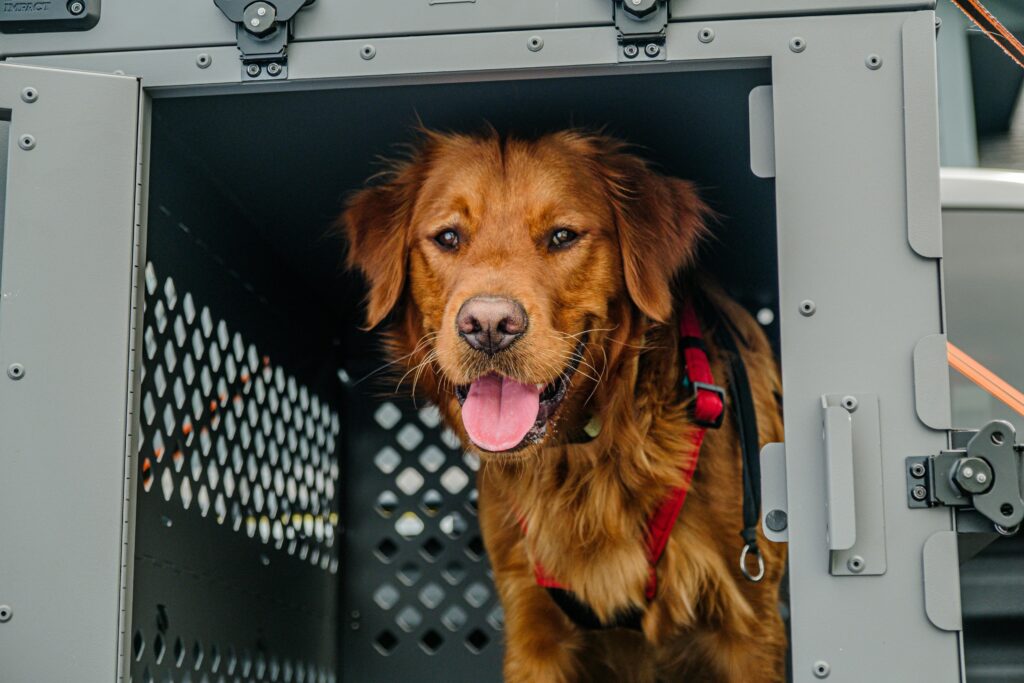Many dog owners hesitate when they hear the words “crate training.” They picture a sad dog locked away for hours, but that’s not what responsible crate training is about. In fact, when introduced correctly, the crate becomes a safe, comfortable space your dog willingly chooses to relax in.
Crate training is not about punishment. It’s about creating structure, teaching boundaries, and giving your dog a sense of security. Whether you have a puppy learning the ropes or an adult dog needing more structure, crate training can be a game-changer.

Why Crate Training Gets a Bad Reputation
A lot of the misunderstanding comes from seeing crates used incorrectly:
- Keeping a dog crated far too long without breaks
- Using the crate as a “time-out” for punishment
- Never making the crate a positive place to be
When done right, a crate is more like a bedroom than a prison. The key is to make it inviting and never associate it with fear.
The Benefits of Crate Training
Crate training, when introduced correctly, offers both behavioral and safety benefits:
- Safety – Prevents dogs from chewing harmful objects or getting into dangerous situations when unsupervised.
- House Training – Most dogs avoid soiling their own space, making crate training a powerful potty training tool.
- Travel Ease – A crate-trained dog travels more safely and calmly, whether in a car or by plane.
- Reduces Anxiety – A familiar crate can comfort a dog during thunderstorms or noisy events.
- Structured Rest – Especially important for puppies who need scheduled downtime.
For a deeper understanding of why structure matters in training overall, check out our guide on why your dog needs structure.
How to Introduce the Crate Positively
The goal is for your dog to see the crate as their personal safe zone. Here’s how:
- Choose the Right Size – Your dog should be able to stand, turn around, and lie down comfortably.
- Make It Inviting – Use soft bedding and a favorite toy.
- Start with Short Sessions – Begin with just a few minutes, gradually increasing the time.
- Reward Calm Behavior – Treats, praise, and affection when entering or staying calmly in the crate.
- Never Force – Let your dog enter willingly; forcing creates negative associations.
Common Mistakes to Avoid
Even with good intentions, some owners unintentionally make crate training harder for their dog:
- Using the crate as punishment – This turns it into a place of fear.
- Leaving them in too long – Dogs need regular bathroom breaks and mental stimulation.
- Inconsistent rules – If your dog is sometimes allowed to roam free unsupervised, they might resist the crate.
Crate Training for Puppies vs. Adult Dogs
- Puppies – Shorter crate times, more frequent potty breaks, and extra positive reinforcement.
- Adult Dogs – May adapt more quickly, but if they’ve had negative crate experiences before, patience and slow introductions are key.
How Professional Training Can Help
Some dogs resist crate training because of anxiety, lack of routine, or previous bad experiences. This is where professional guidance makes a big difference. Our Basic Obedience Program can help set the foundation for crate training by building structure, consistency, and trust between you and your dog.
Expert Insight
According to the American Kennel Club, crate training should always be gradual and positive. Their tips reinforce that a crate is never a substitute for attention, play, and exercise.
Final Thoughts
Crate training is a skill that benefits both you and your dog for a lifetime. It gives them a place to feel secure and helps you manage their safety and behavior. When done correctly, your dog will see the crate not as a cage, but as a personal den.
If you’re struggling with crate training or need help building a strong foundation for obedience, our team is ready to guide you through the process. You can get started today by reaching out through our contact page.

